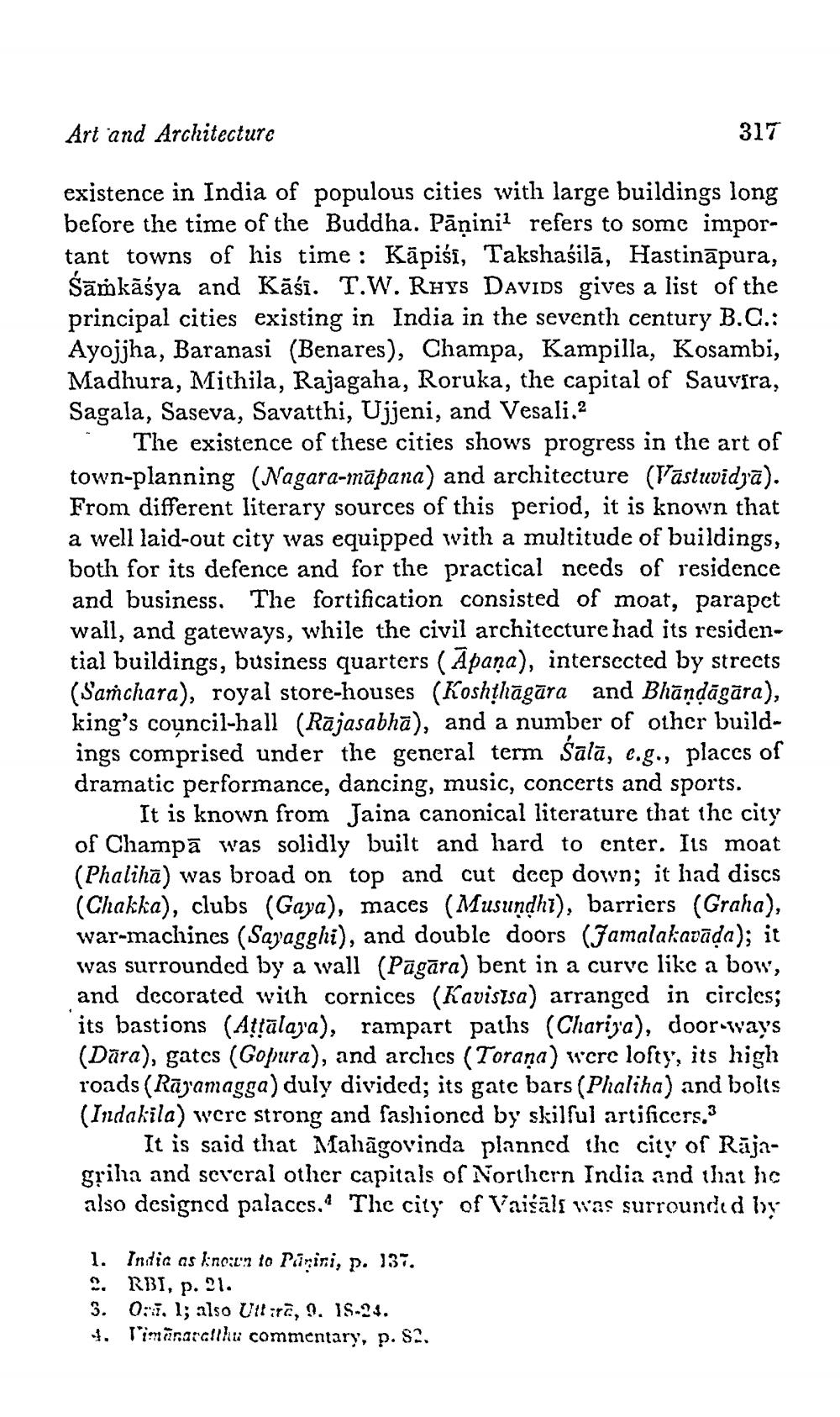________________
Art and Architecture
317
existence in India of populous cities with large buildings long before the time of the Buddha. Pāṇini? refers to some important towns of his time : Kāpiśī, Takshasilā, Hastināpura, Šāmkāśya and Kāśi. T.W. RHYS DAVIDS gives a list of the principal cities existing in India in the seventh century B.C.: Ayojjha, Baranasi (Benares), Champa, Kampilla, Kosambi, Madhura, Mithila, Rajagaha, Roruka, the capital of Sauvira, Sagala, Saseva, Savatthi, Ujjeni, and Vesali.2
The existence of these cities shows progress in the art of town-planning (Nagara-māpana) and architecture (Vastuvidya). From different literary sources of this period, it is known that a well laid-out city was equipped with a multitude of buildings, both for its defence and for the practical needs of residence and business. The fortification consisted of moat, parapet wall, and gateways, while the civil architecture had its residential buildings, business quarters ( Āpaña), intersected by streets (Saṁchara), royal store-houses (Koshthāgāra and Bhāndāgāra), king's council-hall (Rājasabha), and a number of other buildings comprised under the general term Salā, e.g., places of dramatic performance, dancing, music, concerts and sports.
It is known from Jaina canonical literature that the city of Champā was solidly built and hard to enter. Its moat (Phalihā) was broad on top and cut deep down; it had discs (Chakka), clubs (Gaya), maces (Musundhi), barriers (Graha), war-machines (Sayagghi), and double doors (Jamalakavāda); it was surrounded by a wall (Pagāra) bent in a curve like a bow, and decorated with cornices (Kavistsa) arranged in circles; its bastions (Attālaja), rampart paths (Chariya), door-ways (Dāra), gatcs (Gopura), and arches (Torana) were lofty, its high roads (Rāgamagga) duly divided; its gate bars (Phaliha) and bolts (Irdakila) were strong and fashioned by skilful artificers.3
It is said that Mahāgovinda planned the city of Rājagriha and several other capitals of Northern India and that he also designcd palaces. The city of Vaišāli was surrounded by
1. India as knoin 10 Puniri, p. 137. .. RBI, p. 21. 3. 0:1, 1; also Ullira, l. 18-24. 1. Timnarallhu commentary, p.S.




